How To Determine Focal Length Of Camera Lens
Many photographers misunderstand the concept of focal length. Reverse to what some people recollect, the focal length of a lens is not the lens'south physical dimension and it has little to do with its overall size. So, what is it and then? In this commodity, I will answer that question and discuss how to decide which focal length is right for your way of photography.
Definition of Focal Length
Without getting into an in-depth physics give-and-take, the focal length of a lens is an optical property of the lens. It measures the distance, in millimetres, betwixt the optical middle of the lens and the camera's sensor (or moving picture plane). It is determined with the camera focused to infinity. Lenses are named by their focal length, and you can detect this information on the barrel of the lens. For example, a fifty mm lens has a focal length of 50 mm.

In the definition of focal length, I mentioned the "optical eye" of a lens. Y'all may be wondering what this is. Well, a photographic camera's lens is not made from a single slice of drinking glass. Instead, information technology is a combination of lens elements and groups of elements. These combinations help to focus the calorie-free and cut downwards on distortions. The location where all the low-cal rays converge to form a sharp image is known equally the optical centre of the lens.
Focal length is a property of the lens itself, non the camera. What I mean by this is that a l mm lens is a 50 mm lens, regardless of whether on a total frame, cropped sensor, or medium format camera. Even so, the size of the sensor does play a role in the lens/photographic camera combination's field of view, but more than about this in a minute.

The Important Stuff
While the definition of focal length may be relevant to some people, as photographers, it is non something you need to remember. What is more of import to understand is what focal length tells united states of america. Focal length describes the angle of view of a lens. That is, how much of a scene earlier us the lens captures. And in addition, how large subjects inside the frame appear. The longer the focal length of a lens, the narrower its angle of view. Subjects appear larger using long focal length lenses than they practise viewing them with our optics. On the other hand, lenses with brusque focal lengths take in a much wider angle of view. Thus, elements seem much smaller in the frame than they do to our centre.
Have a wait at this illustrative sketch. According to Nikon, its 500 mm f/v.6 lens has an angle of view of 5o, while its l mm f/1.4 lens has an angle of view of 46o. And lastly, its twenty mm f/1.viii lens has an angle of view of 94o. As you tin can encounter, the longer 500 mm lens takes in a much thinner slice of the scene. As a result, simply a portion of a single gunkhole is captured in the shot. On the other hand, the fifty mm lens has a wider angle of view. Continuing in the same location, you tin can capture a much broader department of the scene, including several boats and more of the distant rocks. Nonetheless, with the 20 mm lens, you tin capture the entire scene in a single frame.
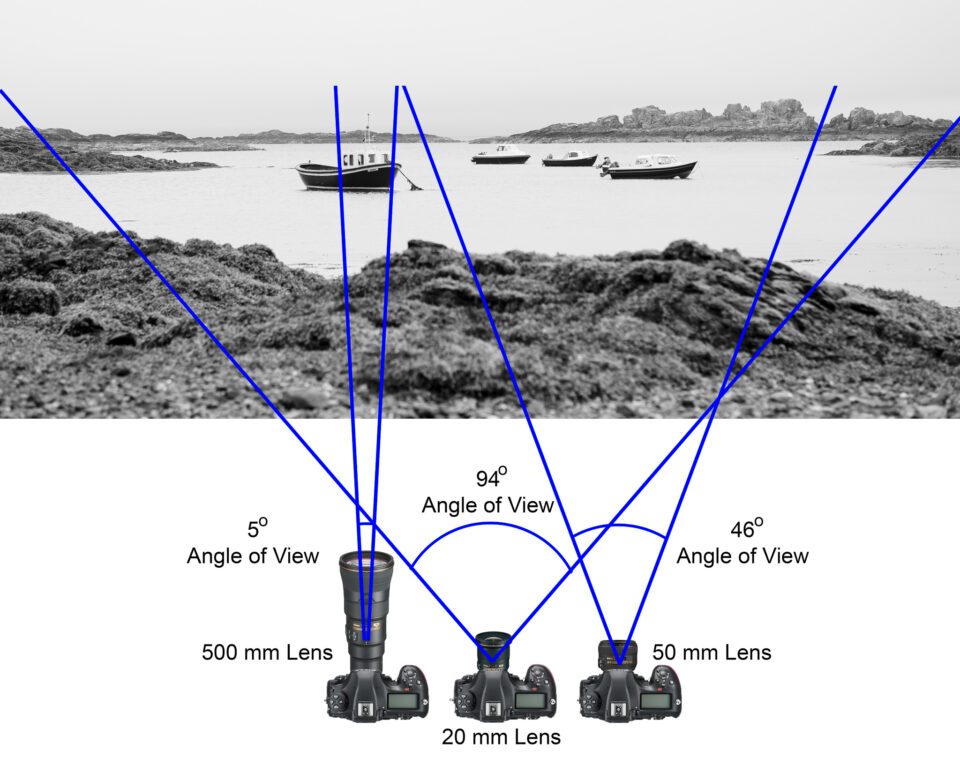
On a recent trip to Lake Tahoe, I came across ii fellows rock climbing while I was hiking. Although I did non have my photographic camera on a tripod, I was sitting downwards on the rocks and captured all iv shots from the same spot. Notice how my images narrow in on the scene as I zoom in on the climber. At a 25 mm focal length, you tin can barely spot the men. Alternatively, at 140 mm you lot tin can see the expression on the climber's face. Incidentally, he managed to climb another 3 thou upwardly the face before he lost his grip, slipped off the rocks, and repelled safely back downwardly to the basis!
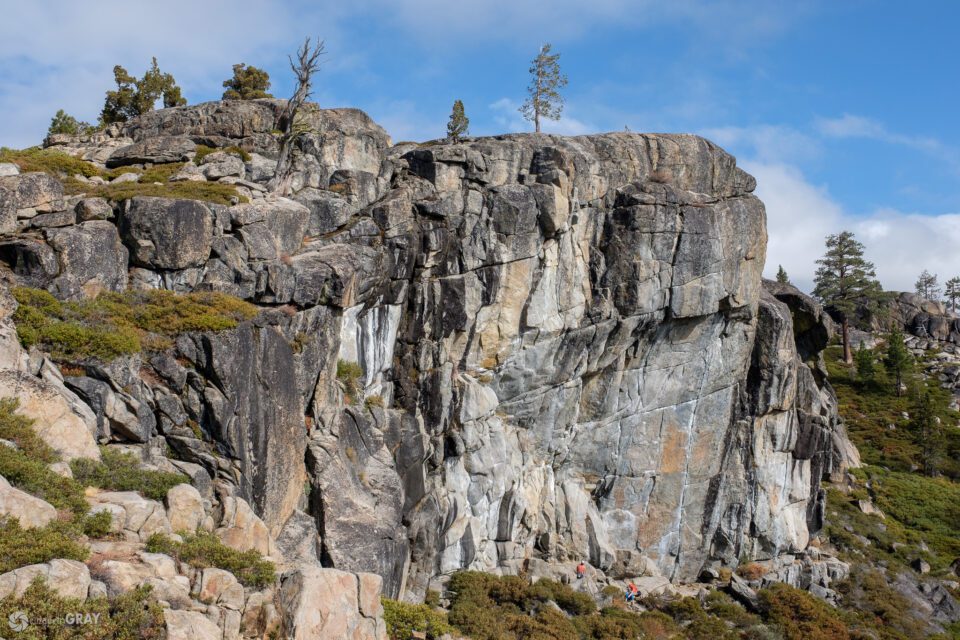
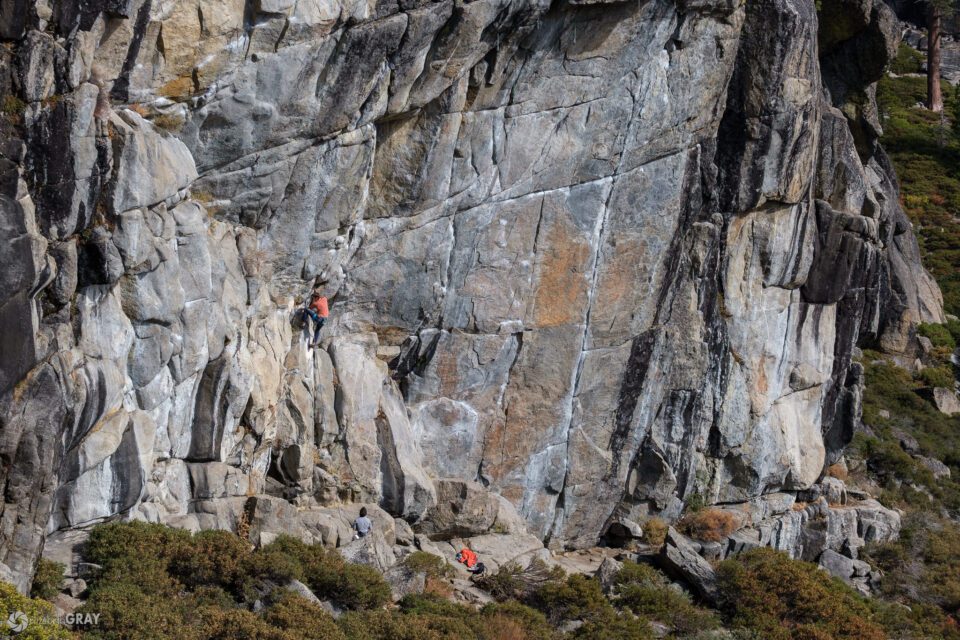
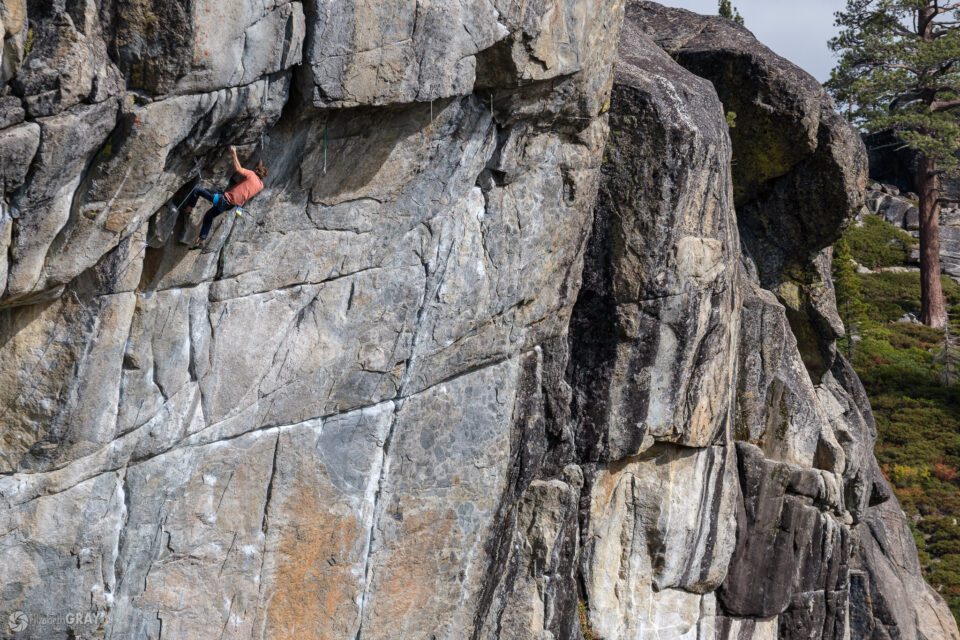
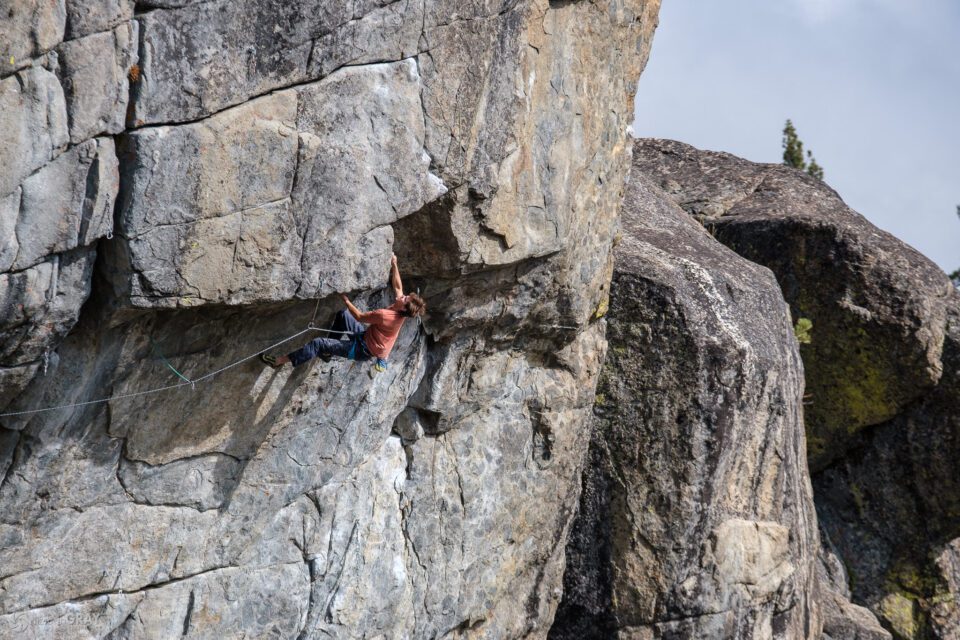
Field of View and Equivalent Focal Length
The terms "angle of view" and "field of view" often get used interchangeably. Yet, equally I said in a higher place, the angle of view is an optical property of the lens. It does non change regardless of what type of camera is beingness used. Field of view, on the other paw, is a effect of the lens/camera combination. Field of view non only depends on the focal length of the lens but also the photographic camera'south sensor size.
A full frame photographic camera has a sensor that is the same size as a 35 mm film negative (36 mm x 24 mm). However, digital cameras today come with a wide diverseness of sensor sizes depending on the manufacturer and camera model. Sensors that are smaller than full frame are considered cropped sensors. This term comes virtually from the fact that these smaller sensors run into less of a scene, in a similar manner to what cropping an image does.
The phrase "constructive focal length" (also known equally equivalent 35 mm focal length) is used to equate what a lens captures in 35 mm sensor terms. Because virtually people are used to working with 35 mm moving picture cameras, at least those of usa with a few grey hairs, the total frame format was adopted as the standard. Equivalent focal length describes the focal length of a lens yous would need to put on a full frame camera to capture the same field of view as a given lens on a cropped sensor camera. This is where ingather factors come into play. The equivalent focal length is constitute by multiply the focal length of the lens by the not-full frame photographic camera'south ingather gene. For Nikon, it'south DX cameras have a crop factor of ane.five. Canon's EF-South cameras have ingather factors of 1.6. Additionally, micro iv-thirds cameras accept a crop cistron of two.0, and Sony and Panasonic'due south 1″ sensors take a ingather factor of two.seven.
This image below was taken with a 24-lxx mm f/2.viii lens at 44 mm on my total frame Nikon D800. If I had put this verbal lens, at the aforementioned zoom, on my Nikon D500 (cropped sensor), it would still be a 24-lxx mm lens at 44 mm. Yet, the reduced field of view – due to the cropped sensor camera – would non run across the same area. In this situation, I would simply capture what is outlined in red. My effective focal length on the D500 would be 44 mm x one.5 or 66 mm. In other words, if I wanted to capture what is outlined in carmine on my D800, I would have to put on a lens with a 66 mm focal length. Of form, I could also zoom my 24-70 mm lens from 44 to 66 mm.
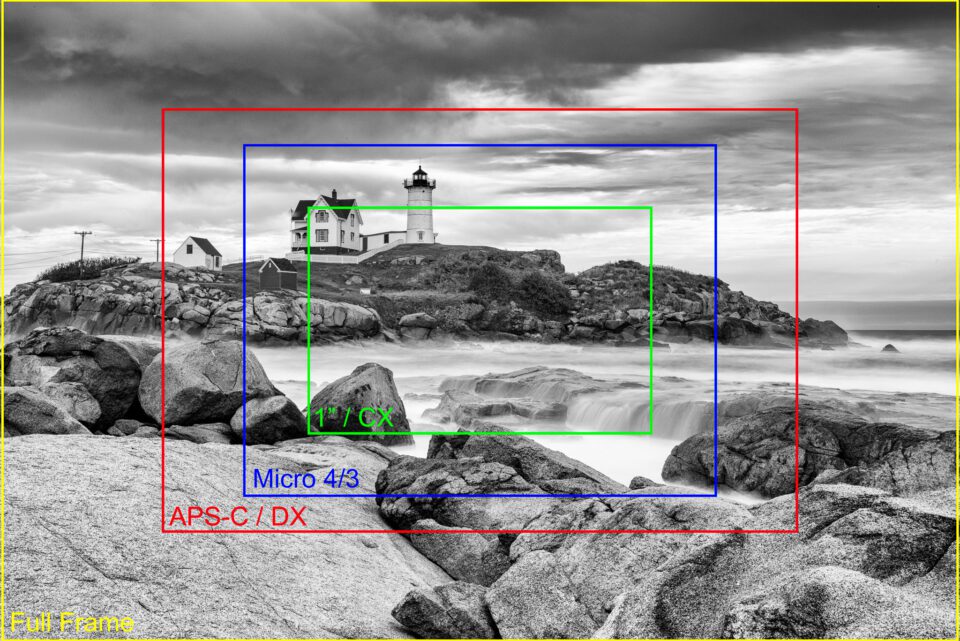
Nasim wrote an excellent commodity on Equivalent Focal Length and Field of View a few years back. For a much more than detailed explanation, bank check his article out.
Classifications of Focal Lengths
Camera lenses are classified into five descriptive categories depending on their equivalent focal length. Ultra wide-angle lenses take a focal length of less than 24 mm in full frame terms. They capture incredibly broad views. However, because of this, they oftentimes present a distorted view of the world. They are fun lenses to use and have a very close minimum focusing altitude and a big depth of field. If y'all photo interiors, these lenses are well worth having in your bag.
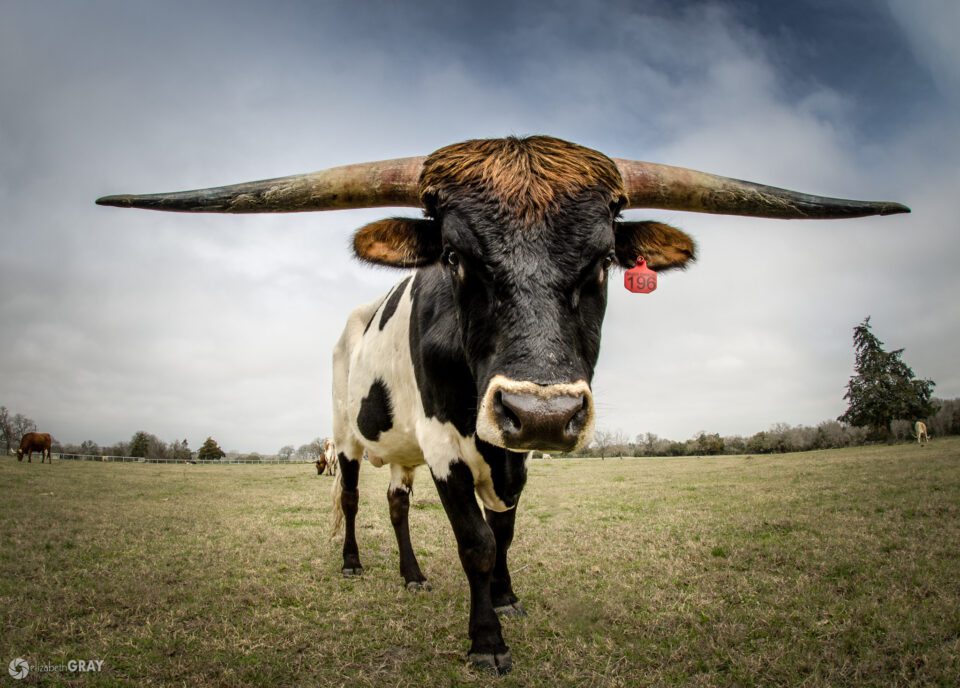
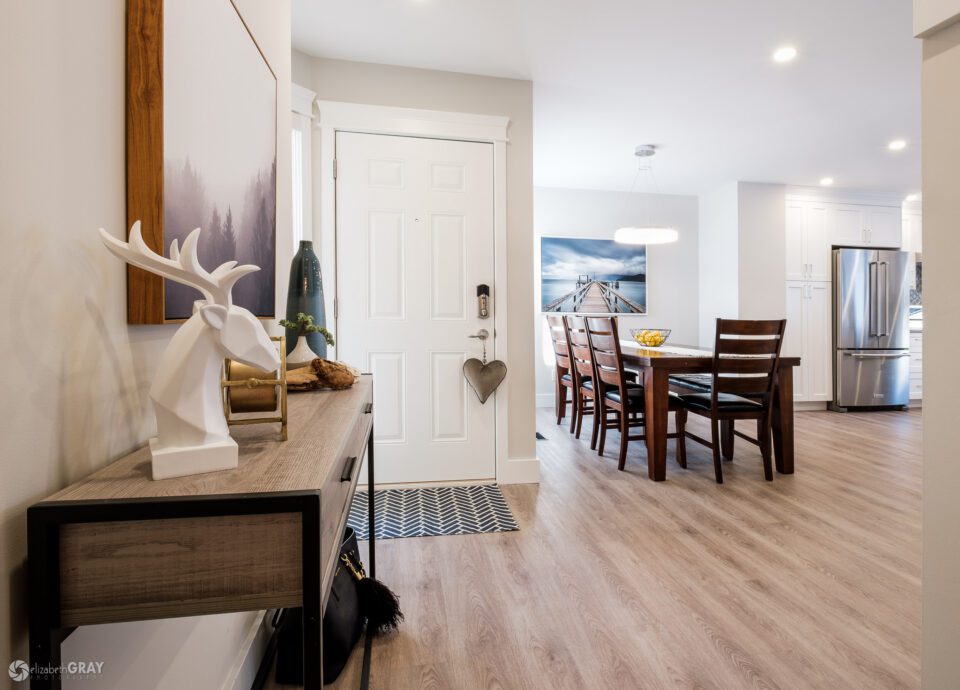
Broad angle lenses have an equivalent focal length in the range of 24 mm to 35 mm. These lenses still take in a wide view and are often used past landscape and architectural photographers. When you utilise a wide lens, information technology is a good thought to try and include some foreground interest. This will give your photos a sense of scale and help to pb viewers into your image. Because these lenses have very large depths of field, information technology is piece of cake to get both near and far objects in sharp focus.
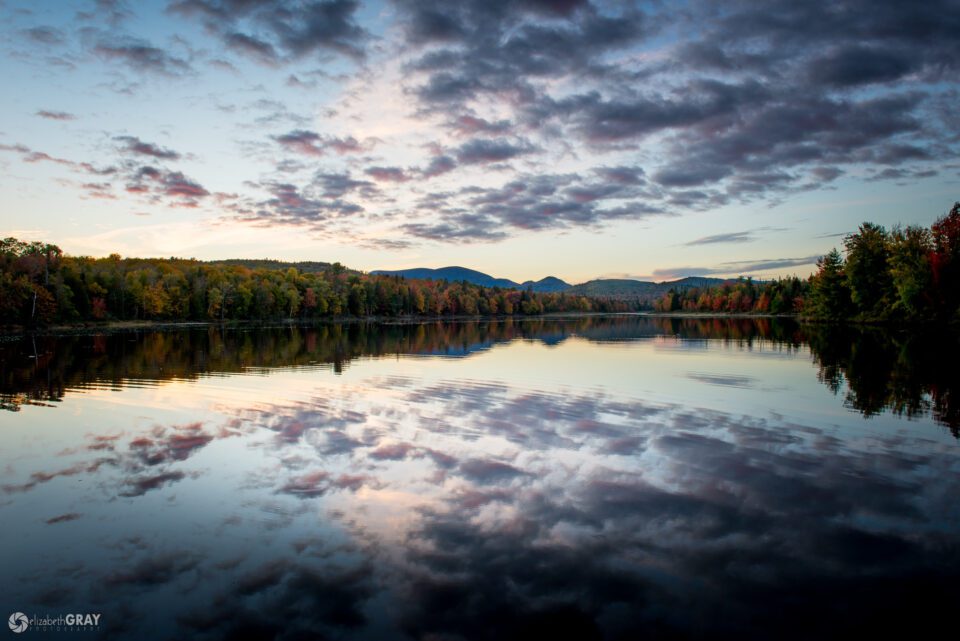
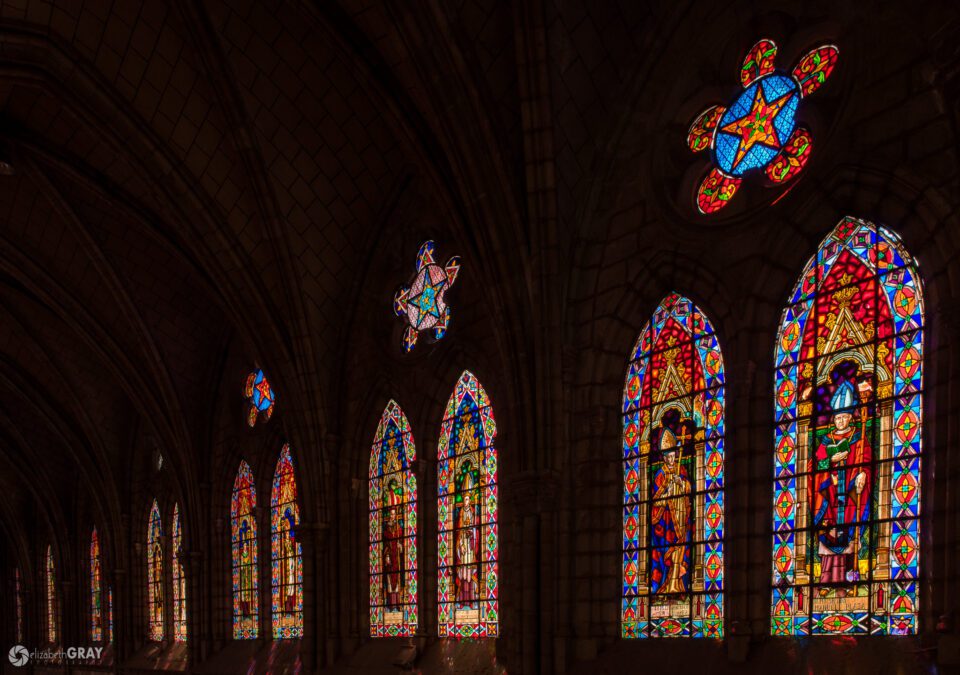
Standard lenses have focal lengths between 35 mm and 70 mm. They capture the world in a style very similar to how our eyes see. They cause minimal distortion, so are a favourite of portrait photographers. Another characteristic of lenses in this focal range is their power to isolate a bailiwick from its background using much shallower depths of field than broad bending lenses.

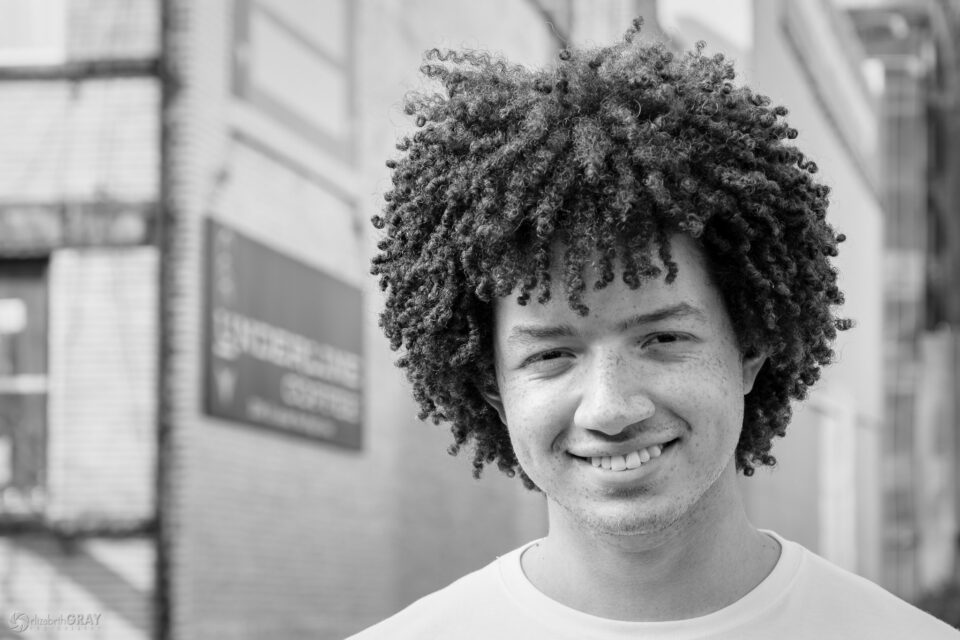
The focal lengths betwixt 70 mm and 300 mm are considered telephoto lenses. They are regularly used by wildlife photographers to become closer to their subjects without being seen. These lenses have shallow depths of field, even at pocket-size apertures, so acquiring sharp focus is critical.
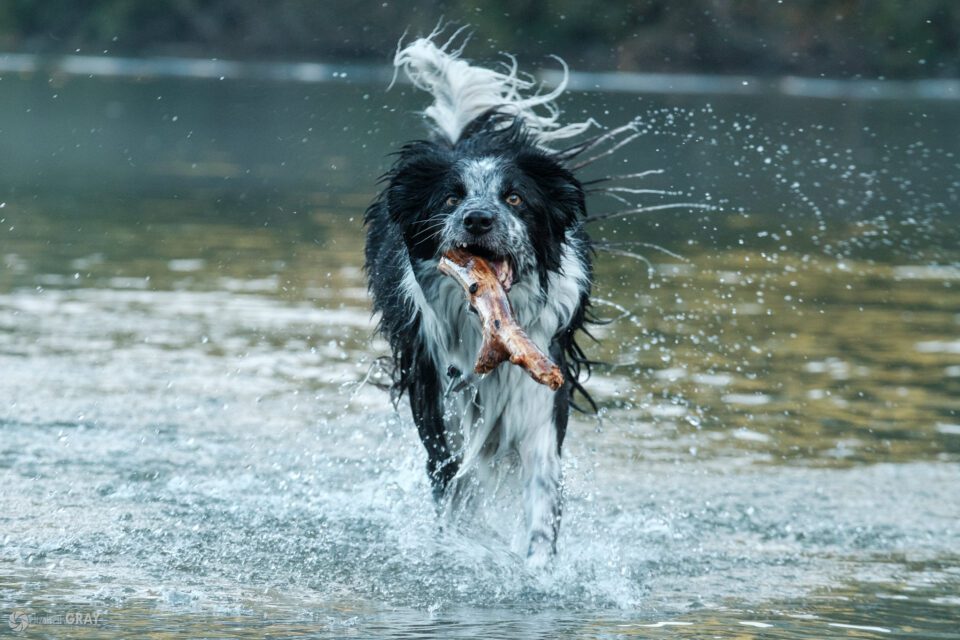
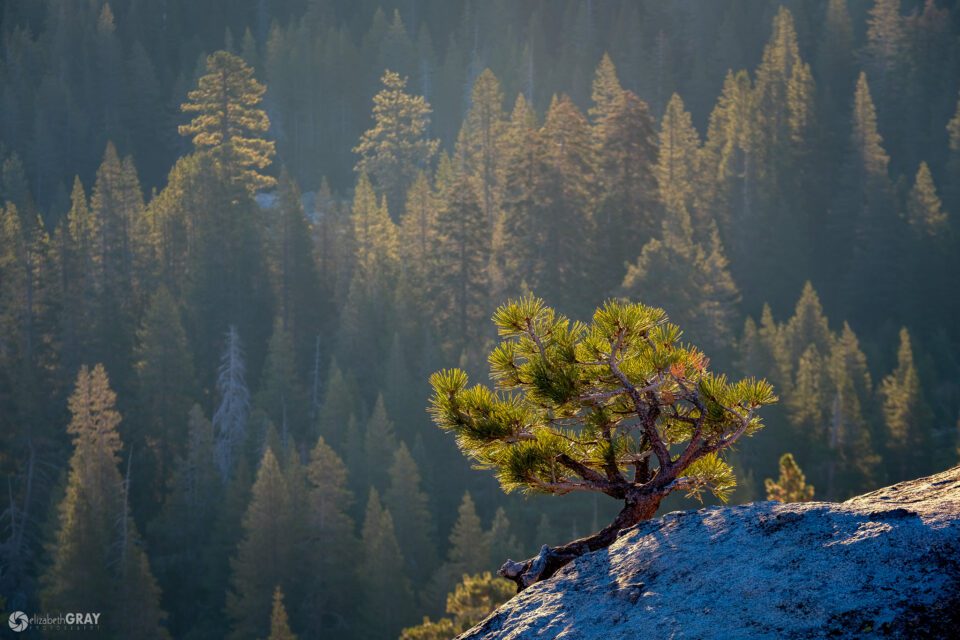
Super telephoto lenses accept focal lengths exceeding 300 mm. They are frequently used for photographing birds and other modest distant subjects. These lenses tin be very large and heavy and may require the use of a tripod to back up them. They are besides very expensive! Nikon's AF-S NIKKOR 800mm f/5.6E FL ED VR lens is a whopping $16,300 at the fourth dimension of writing this commodity! Luckily in that location are some much cheaper options bachelor now that allow photographers with normal pocketbooks to become into bird photography!
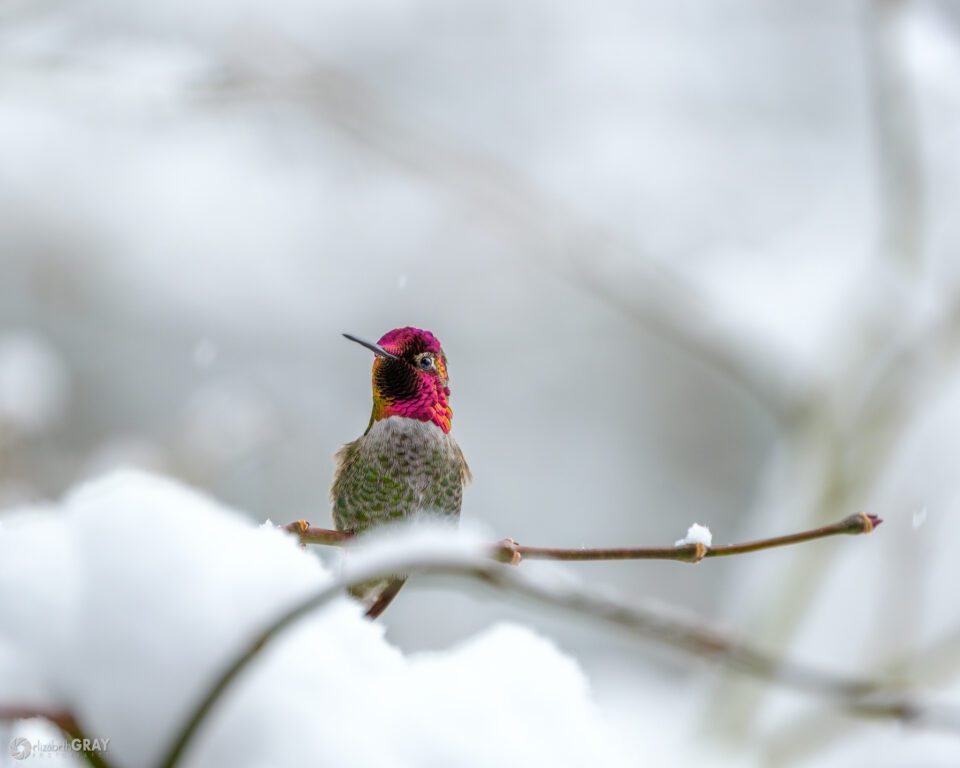

Again, all the numbers I just mentioned are in total-frame terms. If you have a crop-sensor photographic camera, y'all will need to find your equivalent focal lengths by dividing these numbers past one.five, 2, or whatsoever your crop factor is.
Zooms vs Prime?
Prime lenses have a single, fixed focal length. A zoom lens, on the other paw, has a variable focal length. Some popular zoom lens ranges include sixteen-35 mm, 24-70 mm, and 70-200 mm. A great lens for travelling is one that covers both the wide and telephoto ranges, such as an eighteen-200 mm lens. The reward here is that y'all will not take to carry a multitude of lenses with yous, or change lenses to shoot wide vistas and close-ups of architectural details.
There is a downside to zooms, though: they are frequently not as optically abrupt as primes. Although this gap is endmost with newer and better technology, it still exists, specially when dealing with superzooms similar xviii-200 mm lenses. Another drawback is that they tend to have narrower maximum apertures than prime lenses. While a top of the line zoom might have a fixed aperture of f/2.8, primes in a similar focal length may open up much wider and often let in several more stops of light. This can brand prime number lenses more desirable in low light weather condition. For more information on primes versus zooms, see our larger commodity on the field of study.
Conclusion
Don't get hung upwardly on the definition of focal length, or fifty-fifty the difference between the angle of view, the field of view, and the equivalent focal length of a lens. What is of import to call up is that lenses with long focal lengths bring objects closer, like a telescope. And, on the flip side, wide bending lenses are cracking for capturing big vistas. If yous need to go closer to your subject than you tin physically, opt for a telephoto lens. If landscape and architecture are genres yous savour shooting, and so make sure you carry a wide angle lens. For portraiture, and annihilation else in between, you can't become wrong with a nifty-fifty in your bag.
If you have questions, please driblet me a line in the comments below, and thanks for reading!
Source: https://photographylife.com/what-is-focal-length-in-photography
Posted by: grubbsharks1988.blogspot.com


0 Response to "How To Determine Focal Length Of Camera Lens"
Post a Comment